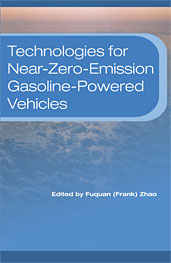Technical Paper
Modeling and Analysis of Microwave Regeneration Process in Wall-Flow Diesel Particulate Filter
2012-04-16
2012-01-1289
To meet more stringent emission regulations for diesel engines, diesel particulate filters (DPF) have been widely used for diesel engines. However, the DPF regeneration is a great challenge for fuel economy. In this paper, a mathematical model characterizing the microwave regeneration process of a wall-flow particulate filter is introduced to better understand the process. Based on this model, important parameters such as evolutions of the energy stream densities of microwaves, wall temperature, regeneration efficiency and the pressure drop in the filters, both cordierite and SiC, are investigated. These results can provide an important theoretical guide for optimizing and controlling the microwave regeneration process.


